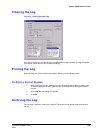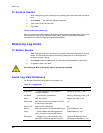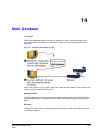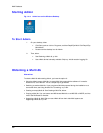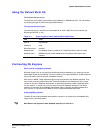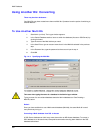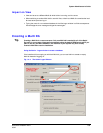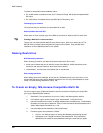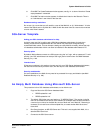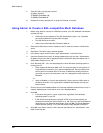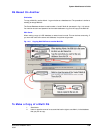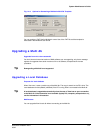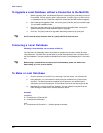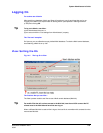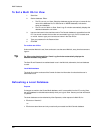
System Administrator’s Guide
Document K14392V1 Rev A 237
07/07
6. Click OK. The Create Database window appears; see fig.
14–4, above. Note that “Create
empty database” is selected.
7. Click OK. The Admin window appears. A default site is listed on the Sites tab. There is
an “Administrator” user listed on the User tab.
Database naming: restrictions
Do not use: (a) a name that you will need for a user of that Multi db; or (b) “Administrator”. It is the
name of the default user in any Multi db. A Multi db with the same name as a user account causes
an error when View is started.
SQL-Server Template
Asking your SQL database administrator for help
An Admin user may find it useful to ask a SQL-Server database administrator for help when
creating a SQL-Server compatible Multi db. SQL-Server may have been configured using
customized folder names. This can hamper creating an empty Multi db remotely, without the help
of a database administrator. Admin can even be installed on the database administrator’s PC.
Security option
By default, Multi software connects to a SQL server using the “sa” login, with no password. To add
security, your SQL administrator can setup a SQL login just for Admin users. See
Multi Database
Security, on p. 165.
Intended users
Of the two procedures in this section, the next one is for your SQL-Server database administrator;
the last one can be used by an Admin user, with the help of a SQL database administrator.
Security consideration
On some installations, the Multi db may need to be protected from copy and deletion (see
Multi
Database Security on p. 165).
An Empty Multi Database Using Microsoft SQL-Server
This procedure is for a SQL-database administrator, not an Admin user.
1. Copy two files to the SQL-Server database folder:
• REMTemplateV3-1.mdf
• REMTemplateV3-1.ldf
2. The default, SQL folder name and path are: “C:\MSSQL7\Data\”. The number in the file
name is not related to the version of the software or hardware used. Rename the files to
a name of your choice, for the Multi db, such as “Multi.mdf” and “Multi.ldf”. Renaming is
necessary to not restrict use of the template files, to create another Multi db at some
future time.
3. Run Query Analyzer, an MS SQL-Server tool. This tool is not supplied with Multi; it is a
standard SQL-Server tool.
4. Connect to the SQL-Server server.



